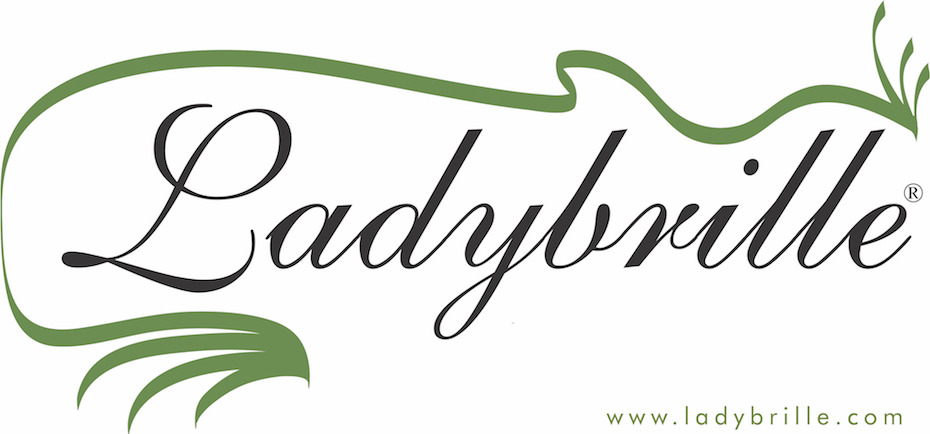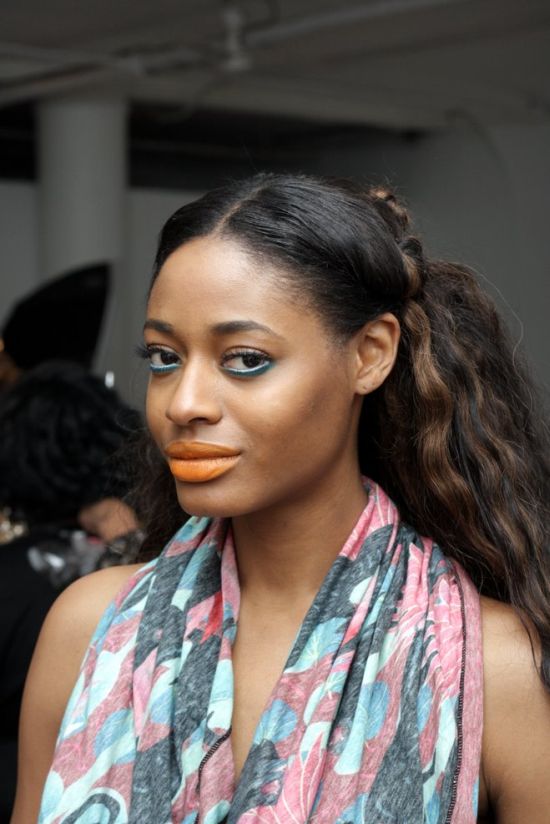 United Kingdom, London based, Yemi Osunkoya is an interesting personality. Designers, especially brilliant ones, are not supposed to be very accessible to the public, correct? Not Osunkoya. Osunkoya can be regularly found engaging with the everyday woman about his label Kosibah Creations on numerous social media including Facebook and Myspace. His accessibility to the everyday woman makes you forget he is the brilliant designer behind his popular label. While his label includes evening and formal daywear, he is best known for his couture bridal work. His bridal work is particularly distinct as Osunkoya has perfected the act of using corsetry and boned bodices to brilliantly reproduce classic, elegant and hourglass figure on all shapes and sizes. Literally, whether you are a size 4 or 20, in a Kosibah gown you are bound to have an hour glass figure, trust me I have been observing his work since 2002. Primarily representing clients in the USA, UK and Nigeria, Osunkoya has received numerous bridal awards and he has showcased his designs on numerous platforms including the recently completed Kulture2Couture where guests such as Damon Dash, Naomi Campbell and Ozwald Boateng were in attendance.
United Kingdom, London based, Yemi Osunkoya is an interesting personality. Designers, especially brilliant ones, are not supposed to be very accessible to the public, correct? Not Osunkoya. Osunkoya can be regularly found engaging with the everyday woman about his label Kosibah Creations on numerous social media including Facebook and Myspace. His accessibility to the everyday woman makes you forget he is the brilliant designer behind his popular label. While his label includes evening and formal daywear, he is best known for his couture bridal work. His bridal work is particularly distinct as Osunkoya has perfected the act of using corsetry and boned bodices to brilliantly reproduce classic, elegant and hourglass figure on all shapes and sizes. Literally, whether you are a size 4 or 20, in a Kosibah gown you are bound to have an hour glass figure, trust me I have been observing his work since 2002. Primarily representing clients in the USA, UK and Nigeria, Osunkoya has received numerous bridal awards and he has showcased his designs on numerous platforms including the recently completed Kulture2Couture where guests such as Damon Dash, Naomi Campbell and Ozwald Boateng were in attendance.
For our November wedding series, we caught up with Osunkoya for a chat on his work; and to really have him break down the art of making his couture bridal gowns and of course offer some few tips for our brides to be. Enjoy!
LADYBRILLE.com: Hey Yemi! Yemi Osunkoya: Hi there.
LADYBRILLE.com: So, as you know this month is all about weddings on Ladybrille.
Yemi: Yes!
LADYBRILLE.com: To kick things off, how long have you been a bridal designer?
Yemi: Since 1991 when Kosibah Creations was officially started, 16 years.
LADYBRILLE.com:[D]id you specifically know you were going to do bridal wear?
Yemi: No. I studied women and menswear and when I opened Kosibah Creations for business, I accepted all orders that came in. But very quickly, I discovered I did not like to do menswear [I didn’t find it artistically challenging for me] and making casual wear with couture methods just did not make business sense – the outfits took too long to make and were therefore more expensive than people were prepared to pay. At the same time, I realized that my designs were more suited for special occasion wear, which includes bridalwear.
LADYBRILLE.com: Interesting. Since then, you’ve been become quite respected in the wedding business it appears, [especially in the UK]. Walk us through what happens the minute a bride contacts you via phone or walks into your studio and tells you she is getting married. Yemi: First of all, I usually get an email message or phone call. We then set an appointment for a consultation in my studio at a fixed time and date. When the client arrives, I sit them down and show them albums pictures of weddings I have done in the past. I feel this is important so they can see the quality and scope of my previous work and place it in context. Even if the dresses are not to their taste, it shows a bride gets what she wants at Kosibah Creations.
I then show her my book of original bridal sketches. Sometimes a client likes the sketch exactly as it is or likes the top, but would have the bottom different or vice versa. I take note of all these comments. I also draw from the bride what her ideas for her ideal gown would be. I ask if there are any body parts she wishes to enhance and or minimize or cover up. I ask where the wedding would be taking place, [for example], in a church, a hotel, stately home e.t.c., as I feel this is also an important factor in coming up with the ideal design.
After a long discussion whereby I get to know what the bride requires, discuss fabric preferences, colors e.t.c, I then sketch a few designs and we end up witling it down to one design. At this point I give the client an idea what the gown would cost. My gowns start from £1,500.00 for a simple straight gown with no boning or structure to it going upwards depending on what the client wants and can afford. But, on average the corseted gowns with full skirts cost between £2,000.00 and £5,000.00. Once the bride has agreed to commission a gown with me, I take her full body measurements – usually about 23 different measurements.
I ask them what approximate height of shoes they anticipate wearing, so I can get a baseline for my skirt length measurement and encourage them to bring shoes of that approximate height for all subsequent fittings. I take a deposit of 1/4 of the cost of the gown at this time. The next step is the 1st toile fitting. This is the mock version of the gown in a fabric called calico. It’s a 3 dimensional pattern and at this point, I can tweak various aspects of the design and fit and also find out how much waist reduction my client can tolerate…
LADYBRILLE.com: Let me ask you this before we get into the general areas of shopping for a gown and the whole bridal entourage. You do mostly custom made work. How can a bride stay within budget when it is custom made and still look good?
Yemi: I have to say a bride has to realize what is involved in a custom made gown and then decide what her budget is. If it is below what I charge, then perhaps going to a ready to wear shop or local dress maker may be the answer.
LADYBRILLE.com: So, all of your work is custom made? Yemi: Yes.
LADYBRILLE.com: How long does it take to order the gown? Yemi: I ask for a lead time of 6 – 9 months. Obviously, I can be flexible with this time both ways, but because I deal with a lot of clients at the same time, and I like to give each client my undivided attention, I ask for this lead time.
LADYBRILLE.com: Typically, most designer gowns from my understanding take 2-4months to make. Why 6-9months? Yemi: [I] can make a gown in 2-4 months, but with my labor intensive methods and the fact the gowns are all created in my studio and not farmed out to outworkers, I do not like to rush the gowns and I’m dealing with a lot of gowns at one time. [H]ere in the UK for Couture gowns 6 months is quite the average lead time.
LADYBRILLE.com: You determined what the bride wants, given her a consultation, what next?
Yemi: The next step is the 1st toile fitting. I also make an appointment to visit fabric shops if the gown involves fabrics such as Lace, so that the fabric can be draped on the client as opposed to looking at a swatch which may not show the whole effect or pattern. All alterations if any done to the 1st toile are noted and another toile is made with the corrections and this usually results in a perfect fitting toile.
LADYBRILLE.com: Once the gown is completed, do you usually recommend that the bride bring her entourage along when she tries it?
Yemi: Yes, I do, because oftentimes, it involves intricate lacing and if I’m not going to be there to dress her on the wedding day, a service I offer when possible, then I feel it is vital for her entourage or someone that will be there on the day to come to the studio to see how the dress is worn and should look like ideally.
LADYBRILLE.com: So, she’s tried the dress and loves it. Do you have any accessories you generally recommend or are those left up to the bride to figure out?
Yemi: No, I offer a one stop shop here. I have a definite idea of how I want my gown styled from jewellery, headpieces, shoes etc and I have alliance partners that I have worked with for years that I can recommend to my client. I also offer studio commissioned accessories so they are made bespoke for my clients to my specifications.
LADYBRILLE.com: Yemi, one of the reasons I knew I wanted you to be a part of this Ladybrille wedding series is because I notice that regardless of the size of the bride, they will achieve a hourglass figure in your designs. How are you able to achieve that look?
Yemi: Ahhh..it’s all what happens inside the garment that people don’t see. After 16 years of designing and making gowns, I’ve come up with a few methods of achieving this. It starts with the way I draft the pattern to the specific measurements I take from the client. I try to manipulate my pattern to create certain illusions. The toile fitting process is also very important. For example, where I make a huge reduction to the waist, the body fat tends to rise to under the arms and push up the bust. I then ensure that I cut the armhole in a way that this flesh is covered and results in a nice silhouette.
I also use a type of boning that is flexible, yet strong enough to achieve what I’m trying to achieve. I also like to use soft fabrics sometimes to give the illusion of soft and float, when the bodice of the garment is quite rigid. This gives my client all the kudos of having a great shape without revealing all the structural engineering going on within the garment. [I] can provide the requirements of my clients whatever they may be. The unifying factor of all my gowns is the figure enhancing element.
LADYBRILLE.com: Hmm . . . now we know! You briefly alluded to having to go to a fabric store to get lace if the wedding gown involves lace. Have you ever used African lace such as voile lace to design? Is it practical or easy to use such lace fabric for a wedding gown?
Yemi: Yes, I have used ‘African’ laces when that is what the client specified. I find I have no problems with them. Sometimes the patterns may be a bit overwhelming to use for the whole gown, so it may be used just at the bodice and then cut out and appliquéd on a plain fabric on the skirt. It depends on the fabric pattern really. I have also used Kente and Aso-oke and a fabric used traditionally by Ethiopians that I don’t know the name of.
LADYBRILLE.com: Speaking of Aso oke [see definition on left sidebar of blogazine], you share the duality of being Nigerian and British. How has that influenced your work, if at all?
Yemi: First of all, because I was brought up in Africa, I’m used to seeing women with curves and therefore, it’s been ingrained in my design ethos. I suppose that’s why my gowns suit ‘real’ women with curves and aims to celebrate the female form. It also helped me to appreciate color and not to be afraid to incorporate color into my wedding gowns. I also appreciate the subtle pressures on brides to conform with certain values in their gowns from potential mothers-in-laws, for example, or the fact that though your guests are all your well wishers, they also expect you to stun them with your gown or you’ll be found wanting!
LADYBRILLE.com: Conforming to certain pressures from mother-in-laws. It is very interesting you say that. Isn’t a bride shopping for her own sense of style and taste?
Yemi: Yes she is, but if she goes for a deep plunging strapless gown, that may not go down very well and it’s best to start your married life on a good footing. It’s all very subtle and shouldn’t really impinge on the design, but important to take into consideration.
LADYBRILLE.com: You have told us the consultation part and walked us through how you get a bride to look amazing on her wedding day. But, could you offer sort of like a checklist that a bride who seeks to buy a designer gown should have down before she walks through that door to your studios to see you? Also tell us what she should bring with her. Yemi: It’s useful to have an idea of what sort of dress you would like, useful but not necessary. Have an idea of what your budget is for your dress, but also visit other couture bridal salons to get a realistic idea of what a couture gown costs and what an off-the- peg or re-styled to fit gown costs and what the difference is. Because of all the boning that goes into my gowns, bras are not necessary, so shoes for the heel height is the main thing.
LADYBRILLE.com: Is there a need to go to bridal shows or flip through [b]ridal fashion magazines to get that idea? Yemi: To get an idea yes, but not necessary.
LADYBRILLE.com: One last question. As to mother-in-laws and starting your wedding on the right foot, I can’t help but think about African weddings. Let’s talk about African weddings overall and specifically weddings you have attended in Nigeria. Could you share with us how similar or different these weddings can be from Western weddings? Specifically, let’s hone in on the Yoruba weddings where the couples are influenced by Western and Nigerian cultures. How much roles do mother in-laws play?
Yemi: In Nigerian weddings in general and Yoruba weddings in particular, parents play an extremely important role. The mother of the bride especially is celebrated and usually has an entourage that ‘dances’ her up to the high table at the reception. The receptions are usually quite structured and formal. There are also lots of people that dress in the same fabric as a group and sometimes specific colors are requested by the bride and grooms families to be worn by their guests. It is each family’s way of setting their own guests apart. For example, it may say on the invitation that the bride’s family asks its guests to wear purple and yellow and the Grooms Gold and Chocolate Brown.
LADYBRILLE.com: Thanks Yemi.
Yemi: Thank you very much for including Kosibah Creations in your Weddings month feature.
Founded in 2007, Ladybrille® Magazine is a California based pioneer digital publication demystifying the image of Africans in the west through contemporary African fashion and celebrating the brilliant woman in business and leadership, with an emphasis on the African woman in the diaspora. Our coverage includes stories on capital, access to markets, expertise, hiring and retention, sales, marketing, and promotions.






This guys work is amazing, i've seen it a few times before! The bridal wear and bridal gowns he creates are perfect, and i'm fond of his sketches too. Great write up aswell ladybrille!
i ment kosibah im very sorry yemi
IM IN LOVE WITH KOSIBAN……..PERIOD
This guy has a great eye for wedding designs.Yet another lovely interview, Ladybrille. 🙂
I luv the wedding gown sketches! He's good!